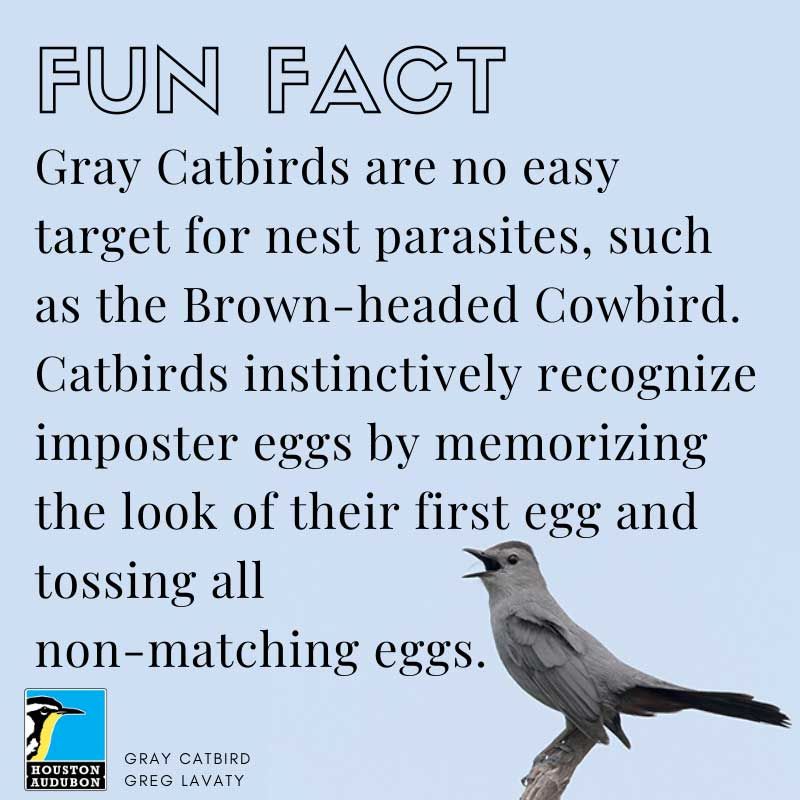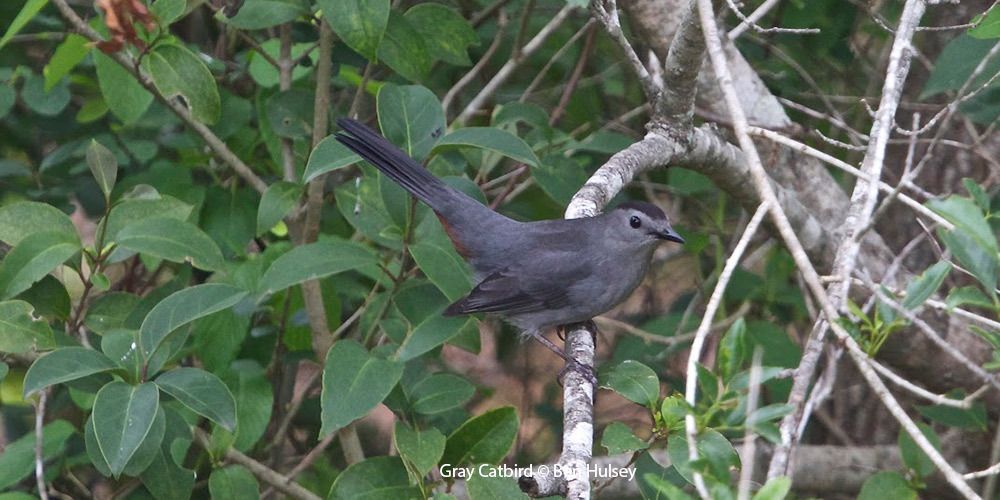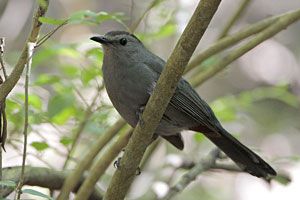
© Joanne Kamo. Photographed at High Island, spring, 2011.
Gray Catbird
Dumetella carolinensis
Family: (Mimidae) Mockingbirds and Thrashers
Preferred Habitat: Woodlands
Seasonal Occurrence: Most common during spring and fall migration. Nests in our area.
Notes by Susan Billetdeaux: Gray Catbirds may be found in all seasons on the Upper Texas Coast. They're most common during migration, but small numbers overwinter. In addition, there are increasingly numerous reports of them nesting throughout the Upper Texas Coast. Their plumage is a soft gray with black cap and rust-colored undertail coverts. Gray Catbirds are usually spotted as they forage in dense shrubbery. They get their name from the soft, cat-like mew call.
Profile by Rachel Myers: Related to mockingbirds and thrashers, the Gray Catbird is a common bird you can see throughout the year on the Upper Texas Coast. They are most common during spring and fall migration, but small numbers overwinter in the area. There have also been increasingly numerous reports of Gray Catbirds nesting across the Upper Texas Coast.
Gray Catbirds are easy to identify for even the beginner birder, with gray plumage overall, a dark cap, and cinnamon/rufous undertail coverts. You can also easily identify them just by hearing their trademark call that they are named after. Their most common call is a raspy “mew” that sounds like a meowing cat. They also make chattering, chek-chek-chek calls and a quiet quirt. Like mockingbirds and thrashers, Gray Catbirds copy the sounds of other species and string them together to make their own song.
Gray Catbirds prefer habitats with dense shrubs, tangles of vines, and areas with young trees in both summer and winter. Common places they can also be found are roadsides, fencerows, abandoned agricultural land, and residential areas. In the summer Gray Catbirds eat mainly insects such as ants, beetles, caterpillars, and moths. Depending on availability, they will also eat holly berries, elderberries, poison ivy, bay, blackberries, and other fruit.
Gray Catbirds usually build nests among dense shrubs, trees, or vines so that they can be hidden. The height of their nests is quite variable. Although they are typically around 4 feet off the ground, they can be on the ground or even as high as 60 feet. The females build the nests, which take around 5-6 days to build. Gray Catbird eggs are a vibrant turquoise green. Despite the efforts of nest parasites, such as the Brown-headed Cowbird, attempting to trick other birds into raising their young, Gray Catbirds are not easily fooled. They instinctively recognize imposter eggs by memorizing how their first egg looks and tossing out the eggs that do not match.
The range of the Gray Catbird extends through most of the United States and even into southern Canada. They are permanent residents along the Atlantic Coast and just north of the Upper Texas and Louisiana coast. Gray Catbirds spend their winters along the Gulf Coast from Florida through Texas and all the way down Central America and the Caribbean. Gray Catbirds can be found at the following Houston Audubon sanctuaries with dense understory: Smith Oaks, Boy Scout Woods, Eubank Woods, SE Gast Red Bay, and Edith L. Moore sanctuaries. Be on the lookout and remember to listen for their cat-like call!
-
Cornell Lab of Ornithology
-
Bird Guide
-
Bird Library
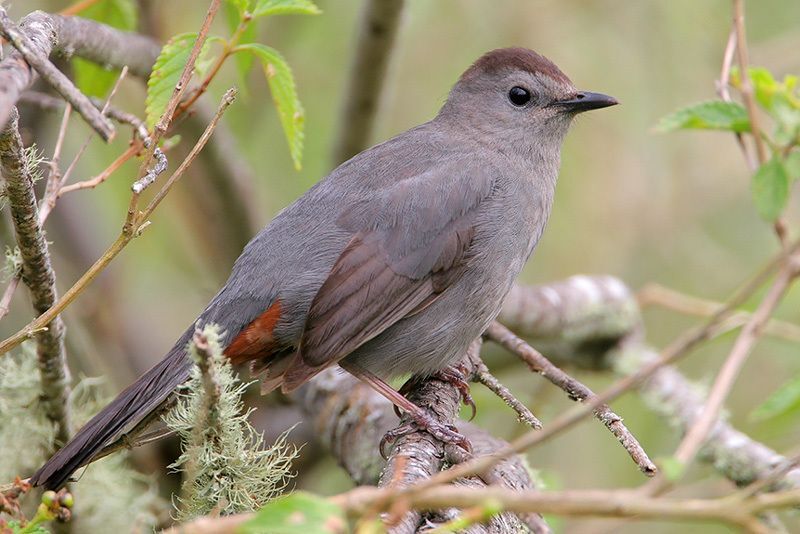
© Greg Lavaty, www.texastargetbirds.com
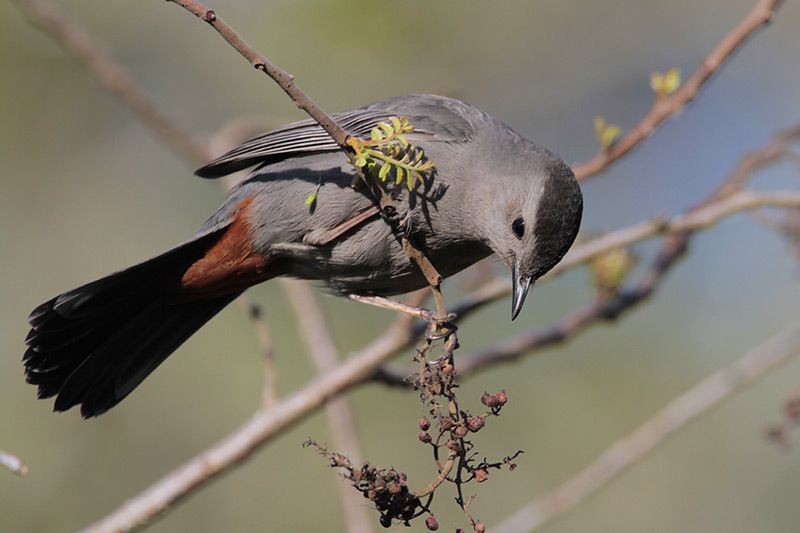
© Greg Lavaty, www.texastargetbirds.com
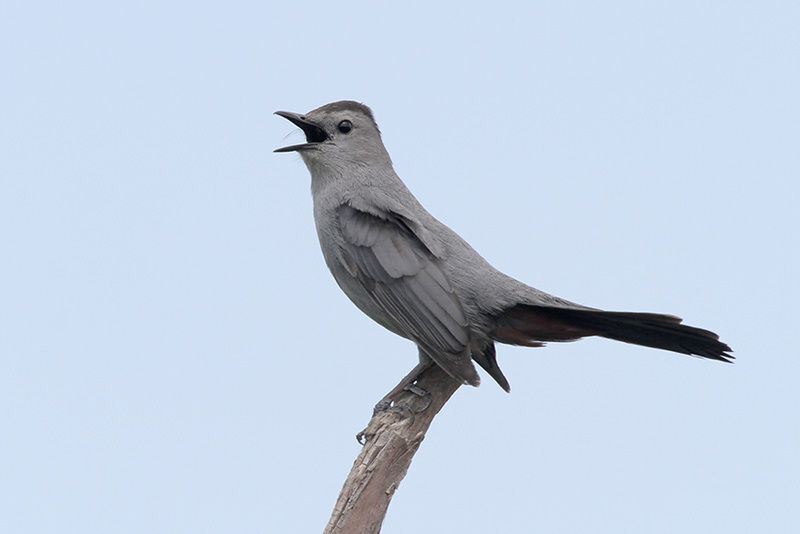
© Greg Lavaty, www.texastargetbirds.com
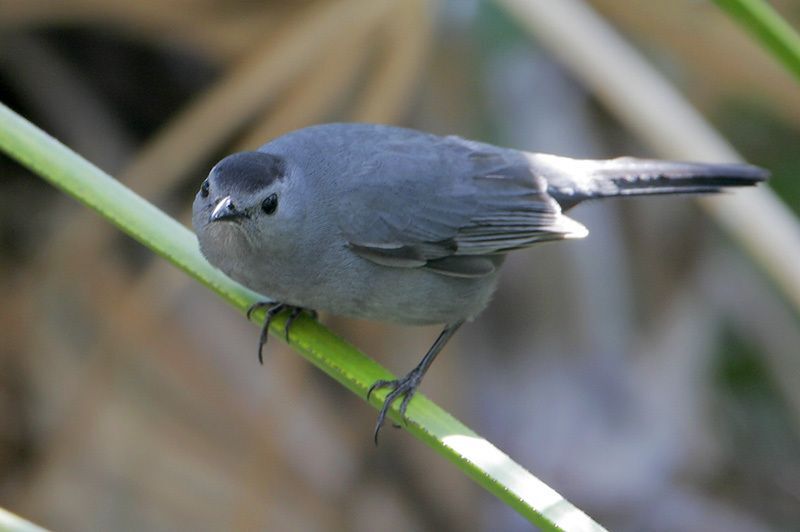
© Greg Lavaty, www.texastargetbirds.com
